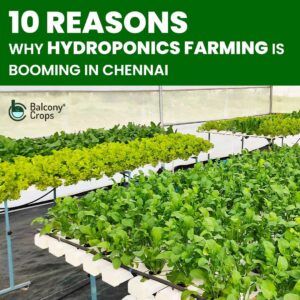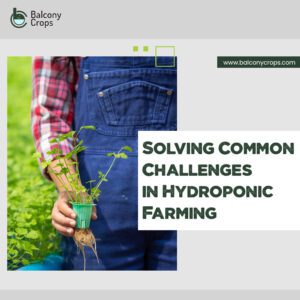In recent years, hydroponic farming has gained popularity among farmers and gardeners as a sustainable and efficient way to grow crops. Hydroponic farming is a soil-less method of growing plants in a nutrient-rich water solution, and it can be done indoors or outdoors. In this blog, we will discuss what hydroponic farming is, why you should consider switching to hydroponic farming, and how to get started with hydroponic farming.
Table of Contents
What is Hydroponic Farming?
Hydroponic farming is a method of growing plants without soil, using a nutrient-rich water solution instead. The roots of the plants are suspended in the solution, which provides them with all the necessary nutrients for growth. This method of farming allows for more control over plant growth, as the environment can be precisely regulated to optimize plant growth and maximize yield.
Why Switch to Hydroponic Farming?

There are several reasons why farmers and gardeners are making the switch to hydroponic farming:
Sustainable Food Production:
Hydroponic farming requires less land and water compared to traditional farming methods. The controlled environment also allows for the reduction of pesticides and herbicides.
Controlled Environment:
Hydroponic farming allows for complete control over the environment in which the plants are grown. This means that factors such as temperature, humidity, and lighting can be controlled to optimize plant growth.
Higher Yield:
Hydroponic farming can produce higher yields compared to traditional farming methods. This is because the plants are grown in a controlled environment that is optimized for growth.
Year-Round Harvest:
Hydroponic farming allows for year-round harvest, as the environment can be controlled to simulate any season.
Less Water Usage:
Hydroponic farming uses up to 90% less water than traditional farming methods. This is because the water used is recycled through the system, reducing waste.
Cost-effective:
While setting up a hydroponic farming system may be expensive, it can be cost-effective in the long run due to the higher yield and reduced water usage.
How to Switch to Hydroponic Farming?
If you are interested in switching to hydroponic farming, here are some steps to get started:
Start with a Small System:
It is recommended to start with a small hydroponic system before scaling up. This will help you understand the basics of hydroponic farming and allow you to experiment with different plants.
Choose the Right Plants:
Some plants are better suited for hydroponic farming than others. Leafy greens, herbs, and tomatoes are popular choices for hydroponic farming.
Select the Right Hydroponic System:
There are different types of hydroponic systems, such as deep water culture, nutrient film technique, and ebb and flow. Choose the system that best suits your needs and the type of plants you want to grow.
Use the Correct Nutrient Solution:
The nutrient solution is the key component of hydroponic farming. It is important to use the correct solution that contains all the necessary nutrients for plant growth.
Monitor the System:
Regular monitoring of the hydroponic system is necessary to ensure the plants are growing correctly. This includes checking the pH levels and nutrient solution levels.
Control the Environment:
As previously mentioned, hydroponic farming allows for precise control over the environment in which the plants are grown. This includes controlling factors such as temperature, humidity, and lighting.
Hydroponic farming is a sustainable and efficient way to grow crops, and it is gaining popularity among farmers and gardeners. By making the switch to hydroponic farming, you can reduce water usage, increase yield, and have a year-round harvest. If you are interested in getting started with hydroponic farming, remember to start small, choose the right plants, select the right hydroponic system, use the correct nutrient solution, monitor the system regularly, control the environment, and consider vertical hydroponic farming.
References:
Hydroponics: Advantages and Disadvantages. (2020, February 12). Retrieved from https://www.greenandvibrant.com/hydroponics-advantages-and-disadvantages
Hydroponic Farming Guide: What is Hydroponics? (2021, January 26). Retrieved from https://www.epicgardening.com/hydroponic-farming/
Hydroponics: How to Start a Hydroponic Garden. (2021, January 12). Retrieved from https://www.familyhandyman.com/article/hydroponics-how-to-start-a-hydroponic-garden/









